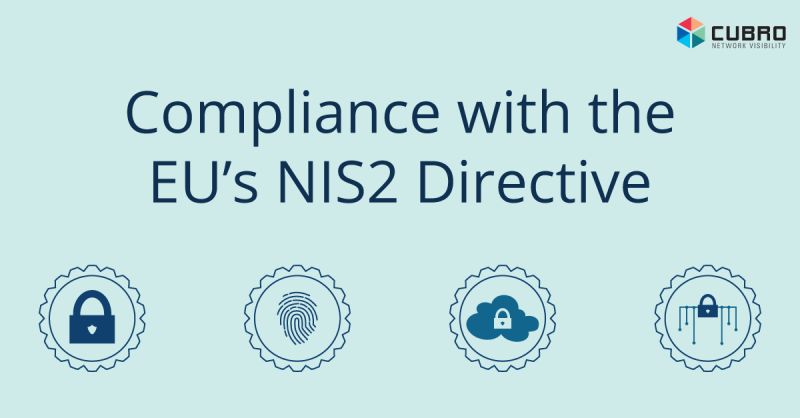
NIS2 refers to the “Network and Information Security Directive” and serves as a continuation and expansion of the earlier EU cybersecurity directive, NIS1.
NIS2’s goal is to enhance the overall cybersecurity posture of EU member states by raising enforcement standards for critical infrastructure sectors.
The NIS2 directive governs both companies and government entities regarding cybersecurity matters.
This directive will be implemented as national legislation, meaning that every organization covered by it must comply with its stipulations.
NIS2 elevates the cybersecurity standards, the enforcement of these standards, and the penalties for non-compliance.
Moreover, management teams within companies can now be held responsible for any shortcomings in meeting the new standards.
NIS2 is to European cybersecurity what GDPR represented for European data protection.
How Cubro can help

EU Member States are required to implement and publish measures to align with NIS2 directives by October 2024. Article 21 mandates that Member States ensure essential organizations adopt suitable and proportionate technical, operational, and organizational measures to address the risks to the security of network and information systems.
The Cubro Visibility Fabric, including its industry-leading Network TAPs and Packet Brokers, lays the crucial groundwork for meeting Article 21 standards.
Compliance begins with a thorough understanding of the network: compiling an inventory of end-users, devices, applications, and traffic. This data can then be utilized to establish network segmentation policies, which enhance security and access control to vital network resources, thereby preventing issues in one area of the network from affecting the entire enterprise.
It is no longer feasible to completely isolate a data network from external access. Critical enterprises must operate under the assumption that their networks have been compromised and should continuously monitor for potential threats. The Cubro Visibility fabric supports a range of Network Detection and Response (NDR) solutions that function like “police on patrol” to detect and contain cyber threats before they disrupt services.
Cubro’s experience with Large, Complex, Critical Service Providers and Enterprise Networks
The NIS2 directive broadens the range of essential and important enterprises included under the standard. It emphasizes Digital infrastructure (IXPs, cloud providers, data centers, CDNs, TSPs, and electronic communication providers). Cubro has been committed to this sector since its establishment over twenty years ago.
Beyond digital infrastructure providers, Cubro has significant expertise in healthcare (hospitals, laboratories, research and development, pharmaceuticals, medical device manufacturers), banking, and finance. These sectors often feature some of the most complex network architectures in the field. They heavily utilize overlay networking standards such as VxLAN, MPLS, GTP, GRE, and others. Furthermore, these networks must accommodate Terabits of bandwidth across multiple campuses and facilities.
Cubro’s products are specifically designed for these challenging environments, employing advanced chipsets that manage these complex, high-speed networks more effectively. Cubro’s visibility solutions are distinguished by their innovative design and modern approach. In contrast to some other vendors’ offerings, which are frequently based on outdated switching platforms, Cubro’s solutions are optimized for both efficiency and effectiveness. Their products require fewer ports, use less power, take up minimal rack space, and are cost-efficient, delivering exceptional value to clients without sacrificing performance.
Cubro Partners with Selected Security Vendors Needed for NIS2 compliance
Cubro has established strategic alliances with specific cybersecurity vendors, guaranteeing smooth integration of their solutions with the critical tools needed for NIS2 compliance. Through these collaborative initiatives, they have created joint solutions that improve cybersecurity protocols and enable efficient data flow for network analytics, troubleshooting, performance enhancement, and infrastructure management.
